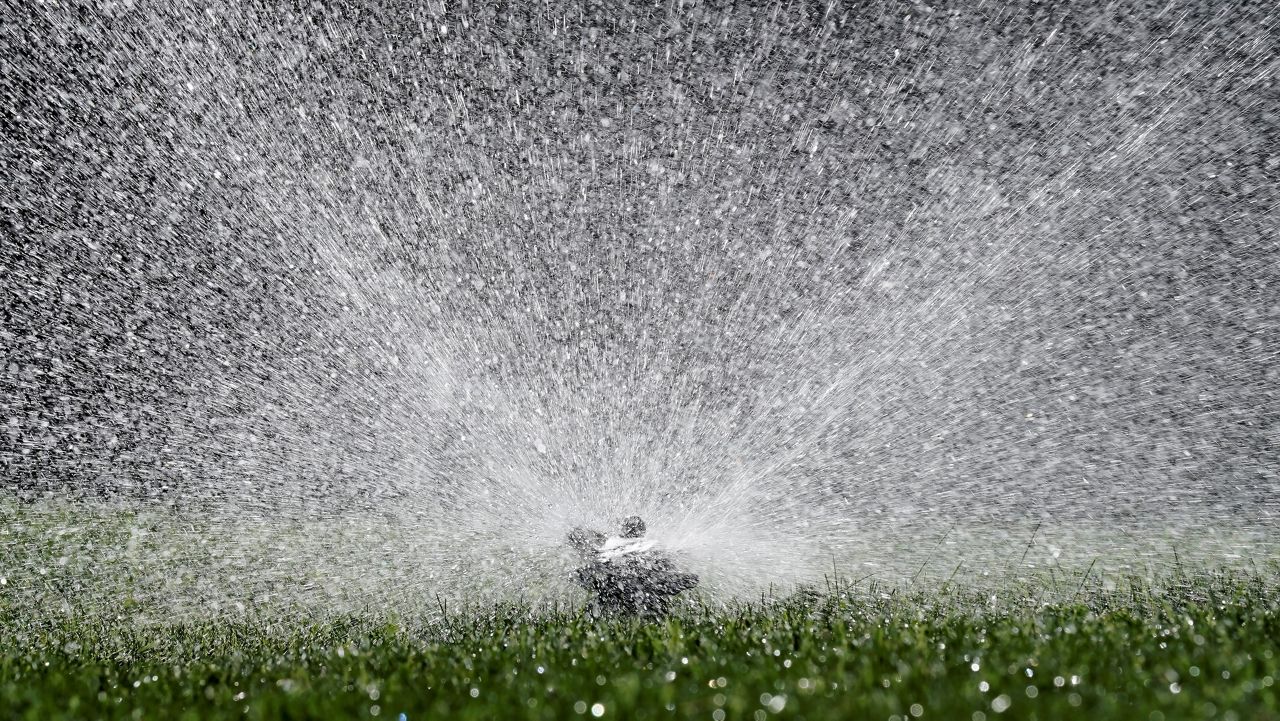SACRAMENTO, Calif. — California’s water reservoirs have already peaked, one month earlier than normal, according to the state’s Department of Water Resources.
Following the driest January and February on record, the state saw a single inch of precipitation during the month of March, which was also 3.6 degrees warmer than average.
“We’re clearly in a third consecutive year of drought,” California Natural Resources Agency Deputy Communications Secretary Lisa Lien-Mager said Tuesday during a drought outlook briefing with state water officials. “Climate change is driving extreme weather and changing the patterns and amounts of rain and snowfall we get, which affects our ability to capture and distribute water.”
Ordinarily, rains in the fall offset dryness in the summer, with snow melt providing the foundation of the summer water supply, according to Department of Water Resources State Climatologist, Dr. Michael L. Anderson. This year, however, January through March received just 15% of average precipitation and also experienced higher-than-average temperatures.
The April 1 snowpack for the state was the fifth lowest historically. Five of the lowest ten snowpacks have been since 2007, Anderson said.
California has already experienced three statewide droughts this century: from 2007 to 2009, from 2012 to 2016 and the one we’re currently in, which began in 2020.
“I could easily make the case that we’re still in the drought that began in 2012, interrupted by wet years in 2017 and 2019,” said Jeanine Jones, manager of interstate resources for the Department of Water Resources. “We’re looking at overall dry conditions, some of which is being driven by warming.”
The Colorado River Basin is 74% of average this year, with statewide reservoir storage at 72%, Jones said. Reservoirs in Lake Powell and Lake Mead have seen record lows this year, prompting a first-ever shortage on the lower Colorado River Basin that supplies much of the water for urban Southern California, including Los Angeles.
“We’re in May now, and it’s a bit late in the season to be talking about snowmelt because a lot of it already has, but the snowpack is rapidly diminishing. We’re around the time when reservoirs are full. This is what we have and what we’re going to get, and we can’t expect anything significant past this date,” Jones said. “This is really an indication that Mother Nature is reminding us we’re in a world of climate change. We’re here, and we need to start adapting to it.”
The Department of Water Resources hinted at an expansion of state funds to combat the ongoing drought in a revised draft of the state budget for the coming fiscal year. Due Friday, the budget is expected to include an additional $180 million to shore up water supplies for smaller water agencies and urban water management grants.
The additional funding will help the state more accurately predict the water supply and communicate with the public that they need to conserve. Already, a revised budget in May included $26 million to incentivize turf rebates and promote other water conservation programs, such as water-saving appliances.
“Going forward, over the long term, some of the cultural perceptions or values about landscaping will likely be changing because of the statutory framework in place for water conservation as a way of life,” Jones said.
The state water agencies’ briefing came hours after LA Mayor Eric Garcetti and the Los Angeles Department of Water and Power announced new restrictions for the city. Starting June 1, LADWP customers can water their lawns only two days a week, with each use restricted to eight minutes with sprinklers or 15 minutes for sprinklers using water-conserving nozzles. LADWP is also asking its customers to reduce per-person water usage by seven gallons a day.
It’s a tall order. Already, Californians aren’t conserving as much as they need to. In March, state residents saved 19% less water than they had two years earlier, when the drought was just setting in, according to the State Water Resources Control Board.
A March 28 executive order from Gov. Newsom directed the State Water Board to consider regulations that could ban the irrigation of decorative grass or non-functional turf that serves no recreational purpose. The State Water Board will consider those measures next month.
“We really need to be thinking about the longer term, not just what happens this summer. The goal is long-term resiliency in the face of climate change,” Jones said, citing the city of San Diego as a good example. In response to a drought that lasted from 1987 to 1992, San Diego took measures to reduce its reliance on imported water supplies, such as investing in water recycling, conservation and emergency storage.
Los Angeles has been taking similar steps. In 2018, LA voters approved Measure W to provide almost $300 million in annual funding for projects that increase local water supplies. As part of the city’s Green New Deal, it is also working to recycle 100% of its wastewater for reuse by 2035.



